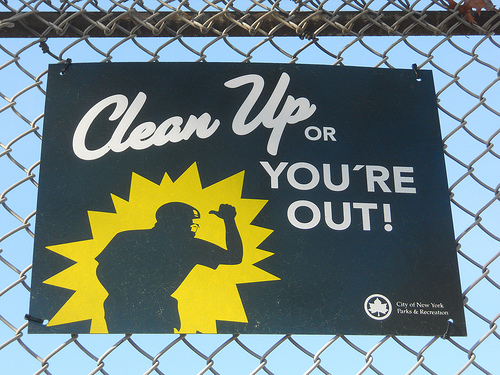We are happy to see the Environmental Protection Agency (EPA) today propose a critical air quality standard to protect Americans against life-threatening air pollution such as mercury and arsenic from power plants, which currently emit air toxics with no limits.
According to EPA, each year this new protection will save as many as 17,000 lives and prevent at least 120,000 cases of childhood asthma. Indeed, although coal-fired power plants are our No. 1 human-caused source of mercury pollution, the industry has NEVER been required to limit their mercury emissions — until now.
Mercury is one example of a particularly harmful air toxic because it builds up in the environment and then fish, which people then consume. A potent neurotoxin especially dangerous to children and developing fetuses, mercury exposure affects a child’s ability to walk, talk, read, write, and learn.
This statistic scared me when I was pregnant and still shocks me now as the mother of a 10-month-old: The mercury problem in the U.S. is so widespread that, according to EPA studies, at least 1 in 12 — and as many as 1 in 6 — American women of childbearing age have enough mercury in their bodies to put a fetus at risk from developmental problems.
Air toxics include some of the most hazardous air pollutants known to us. In addition to mercury and arsenic, power plants emit heavy metals, dioxin, and acid gases that threaten public health and child development. Even in small amounts these extremely harmful air pollutants are linked to health problems such as cancer, heart disease, neurological damage, birth defects, asthma attacks, and even premature death.
For decades, Big Coal and Big Oil have fought Clean Air Act protections that would have reduced the toxic air emissions from their facilities, even though coal plants are among the largest sources of toxic air pollution.
These polluters will undoubtedly work to roll back and weaken this proposed protection from air toxics, but the American people — including mothers like me — will not let that happen.
Because mercury builds up in the body over time, testing people’s hair can detect levels of mercury exposure. I’m getting my hair tested, and the Sierra Club has several major events planned so far for hair testing:
• Sierra Club Executive Director Michael Brune hosting a hair testing event at an Ardmore, Pa., salon today
• Three hair testing events in Alaskan native villages, where residents consume large amounts of fish that may contain elevated mercury levels
• A major hair testing event near Wilmington, N.C., in partnership with local health, faith, and community organizations
• Additional hair testing events in Milwaukee, Wisc., Minneapolis, Minn., Oklahoma City, Okla., Billings, Mont., Lexington, Ky., Sulphur Springs, Texas, and more than 10 other cities
It’s past time to stand up to polluters and defend public health. We need EPA’s strong mercury protections right now.
While I know I can’t raise my daughter in a completely pollution-free world, I can protect her from the worst of it by encouraging EPA to stand up for kids. We thank EPA’s Lisa Jackson for this mercury proposal, and I hope other parents will join me in calling for stronger protections, so our children can grow up in a cleaner, safer world.



